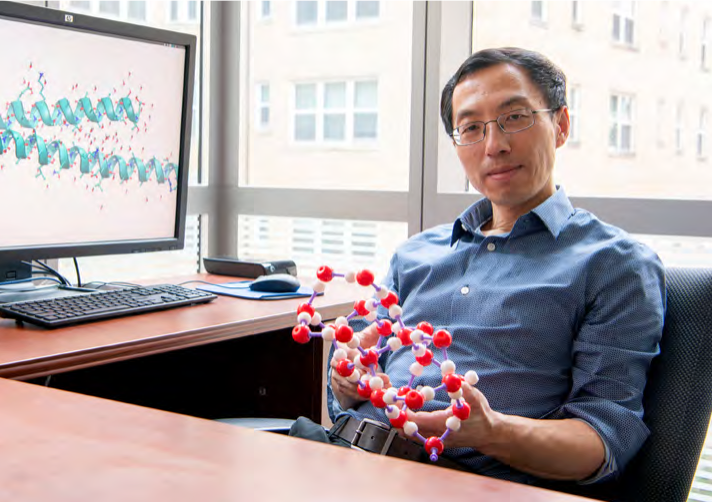Dr. Tianshu Li: Material Progress
Dr. Tianshu Li’s ultimate research goal can be stated quite simply: to understand materials and develop better materials. The research itself, however, is anything but simple.
Dr. Li uses computational modeling to try to understand the behaviors of materials, and his current research explores primarily two interest areas: anti-icing materials and sensing materials for infrared imaging.
Anti-icing technologies are important to the transportation industry for both safety and economic reasons, whether for airplanes, ships, or cars and trucks. Existing technologies tend to be very costly and have significant side effects, such as corroding roads. To find better solutions, Dr. Li is looking to nature.
“It turns out that nature has already developed an efficient anti-icing strategy that we can learn from,” he remarks. “Fish can survive in very cold environments. Their bodies have developed a special anti-freeze protein that prevents ice from growing, and the nice thing about the anti-freeze proteins is that you don’t need a lot of them to do their job.”
Dr. Li wants to develop a material that mimics the function of the proteins and is much cheaper than current technologies, so he is leading a multi-disciplinary team of other researchers who hope to study the issue from the molecular to the microscopic level.
He also is a member of a new MURI (Multidisciplinary University Research Initiative) grant team, led by the University of Arkansas, to develop a new material for infrared imaging. While this Department of Defense-funded research focuses on military applications, it also has a number of civilian applications, such as improving geological surveys, chemical sensing, and self-driving cars.
The infrared imaging industry currently is dominated by a semiconductor compound that
is expensive and not high-quality. Dr. Li hopes to develop a new material called silicon germanium tin alloy (SGTA), which has better performance than the existing compound
and is significantly cheaper. One of the sensing applications that uses the semiconductor compound is lidar, a survey method that measures the distance of an object by illuminating a laser toward the object and measuring the feedback—the wavelength of the laser—to make 3D representations of the object. Shifting the material in the sensors from the semiconductor compound to SGTA could bring the cost of the sensors down dramatically.
Dr. Li hopes that the team’s work will fundamentally change the understanding of SGTA and its possible applications. “We call it a disruptive technology. It will completely revolutionize the infrared imaging field,” he claims.


